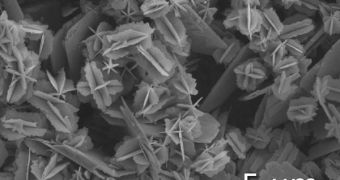Undoubtedly, in future medical therapies, synthetic nanoparticles will play an essential role. Already, developments in technology allow for these materials to be used as carriers for drug and vaccine molecules, and further advancements will see them being employed more often in hospitals around the world. One of the requirements that would allow their use to spread is the ability to track them wherever they go, and this objective can now be achieved thanks to the efforts of a German team.
Nanoparticles are even able to carry genes wherever they are required, and tend to be very precise. This means that, if they are meant to go to the kidneys, they will arrive there and nowhere else. However, it's understandable that doctors need to ensure this is the case 100 percent of the time. The new, highly sensitive microscopic technique was developed by a research group from the Ludwig-Maximilians-Universitaet Munich. The experts were led by Professor Christoph Brauchle, and they also cooperated with Technische Universitat Munchen expert Dr. Christian Plank for the study.
The new observation method works both in real-time, and at high spatial-temporal definitions, which means that the researchers using it can get a very good idea of what the nanoparticles they inject are actually doing in the body. Up until now, the only way for experts to accurately determine if their particles worked was to inject them, and then wait to see what happened. If a certain gene got activated or shut down, depending on the plan, then it meant that the experiment had succeeded or failed.
“Even genes can be transported this way. That means we could be seeing new breakthroughs in gene therapy soon, which has seen more than its fair share of setbacks. After all, lacking most are functional transporters,” Plank says, quoted by PhysOrg. The main advantage that these nanoparticles have is the fact that they are so small, that most barriers at a cellular or tissue level in the body cannot stop them from going wherever they are programmed to go. This may prove extremely useful in breaking up bacterial biofilms, as well as the defenses that cancer tumors employ to protect themselves.
“Our new approach has also revealed bottlenecks in nanoferry transport. We saw, for example, that the magnetic field can only direct particles outside cells. But, contrary to expectations, it did not facilitate entry into cells. Thanks to these new insights, existing nanoferries can be suitably optimized in future, and even new systems developed,” Brauchle concludes.

 14 DAY TRIAL //
14 DAY TRIAL //